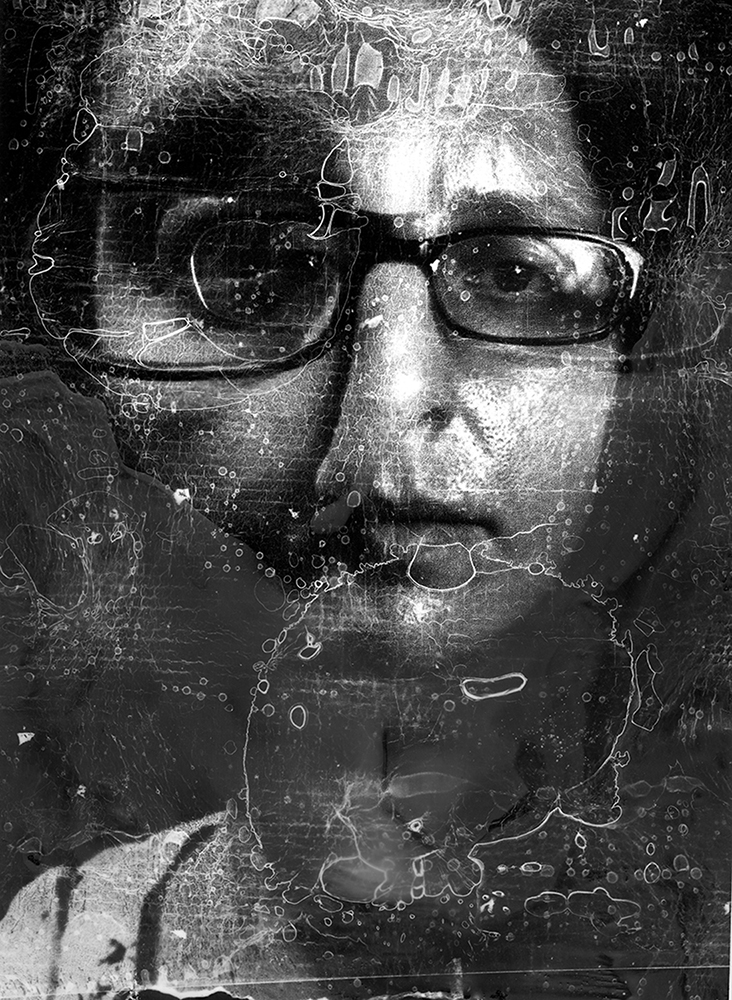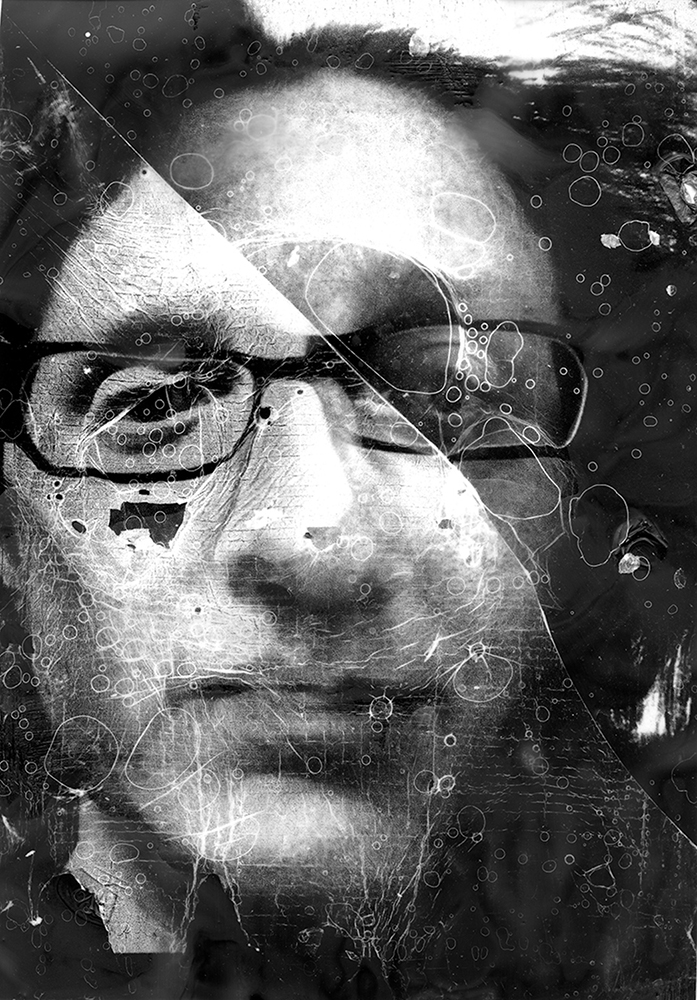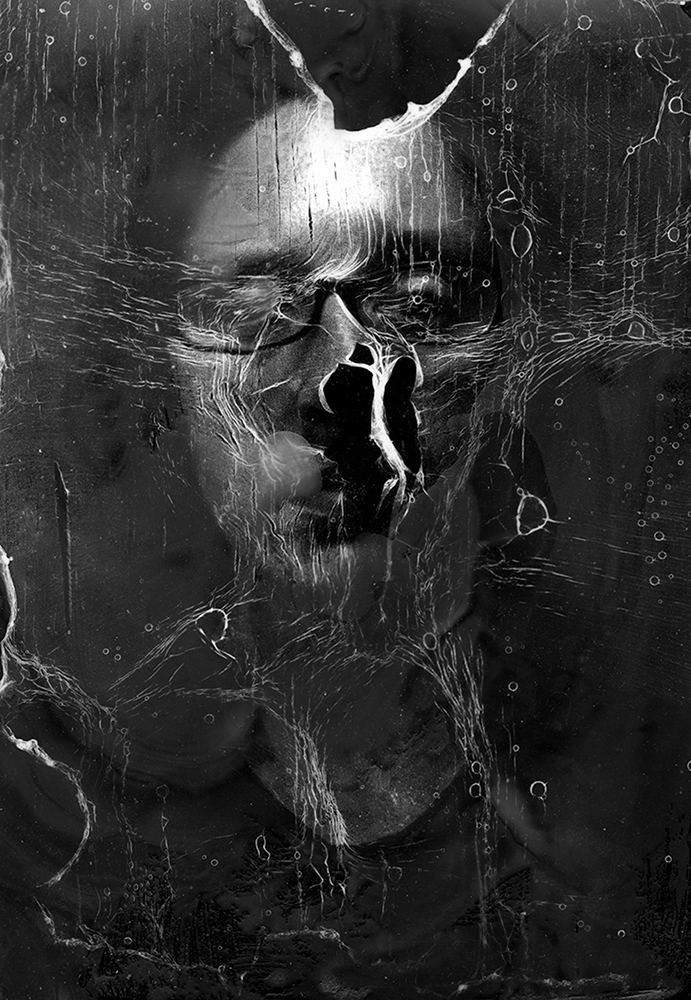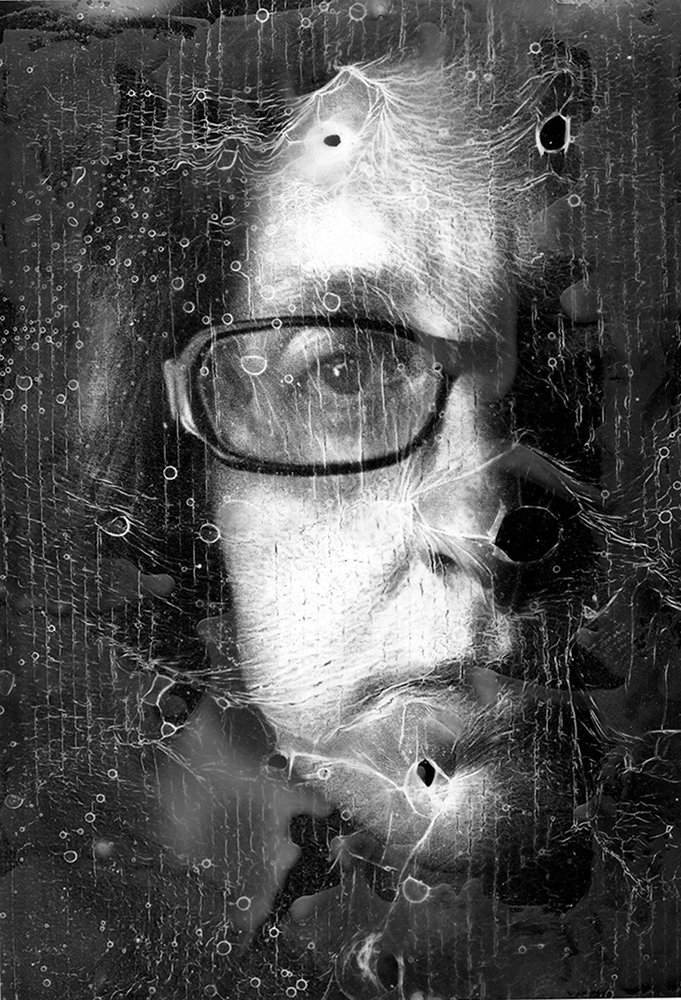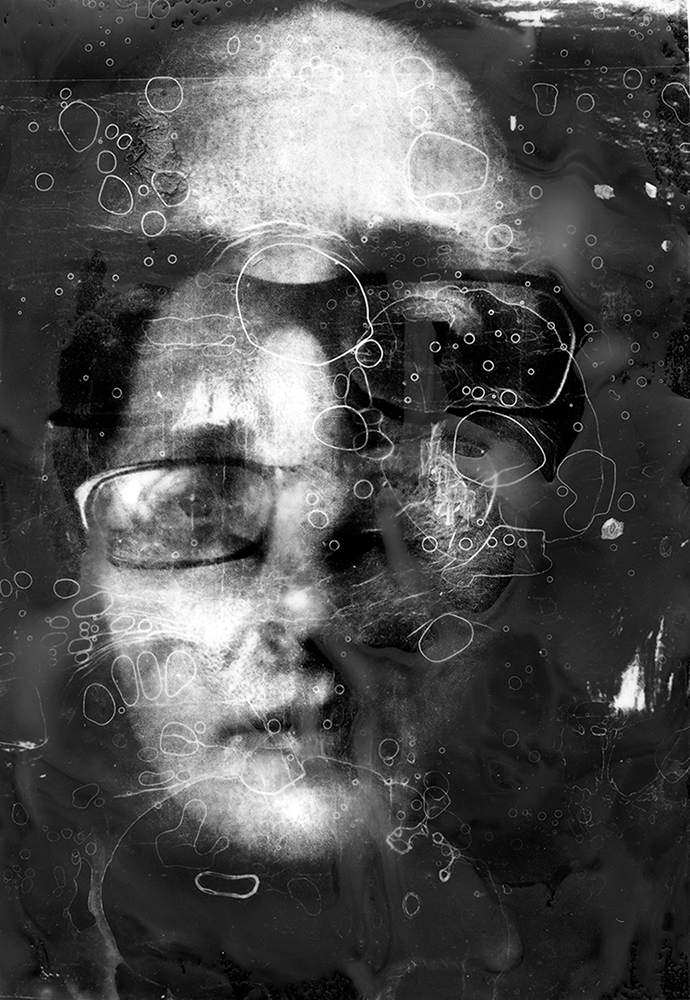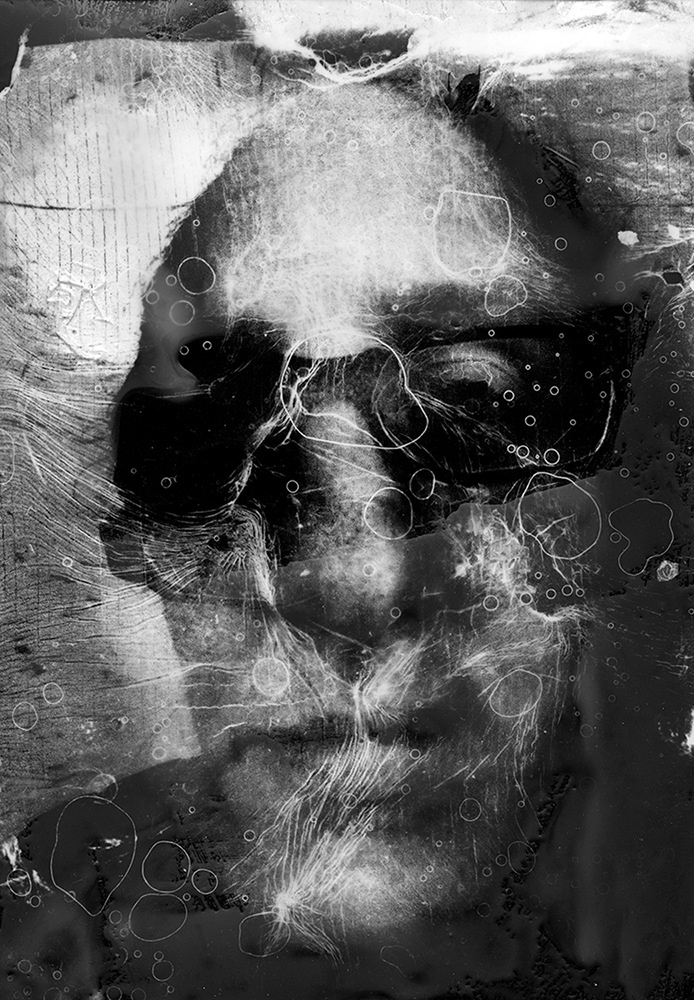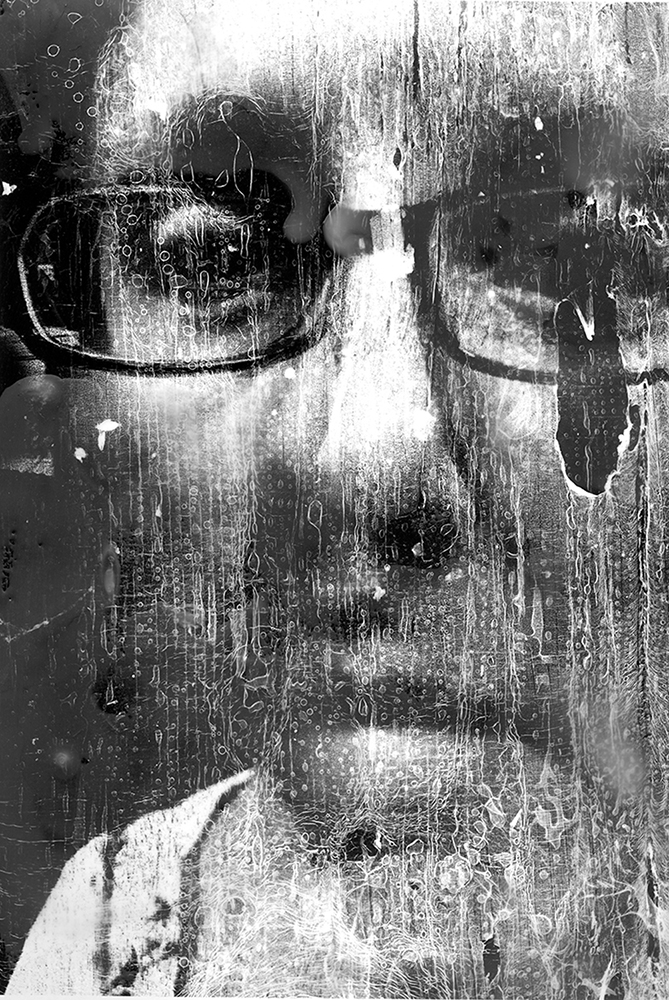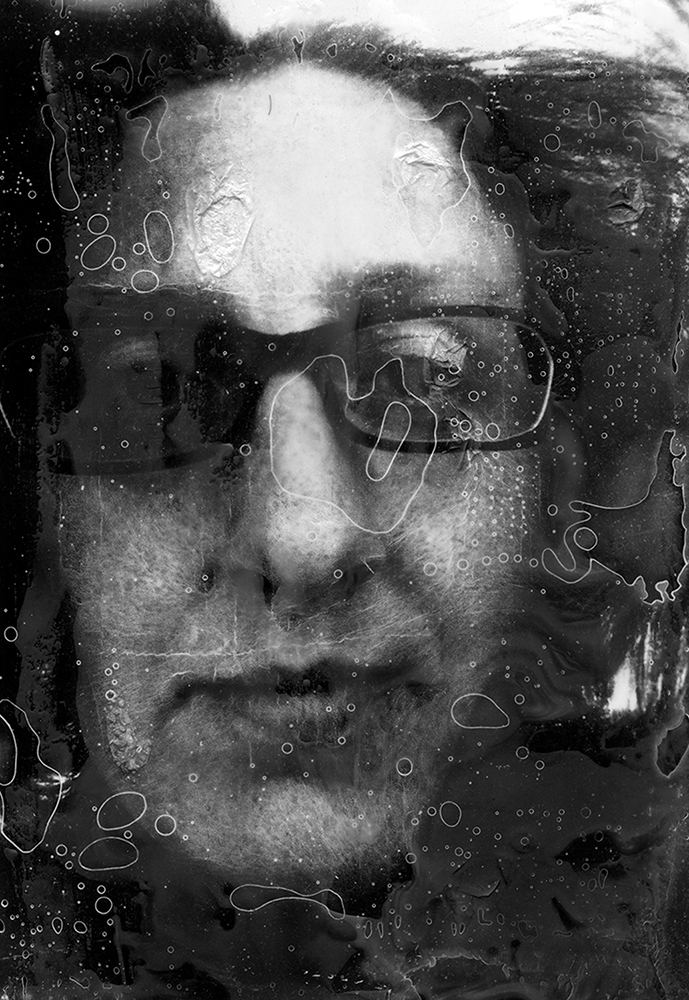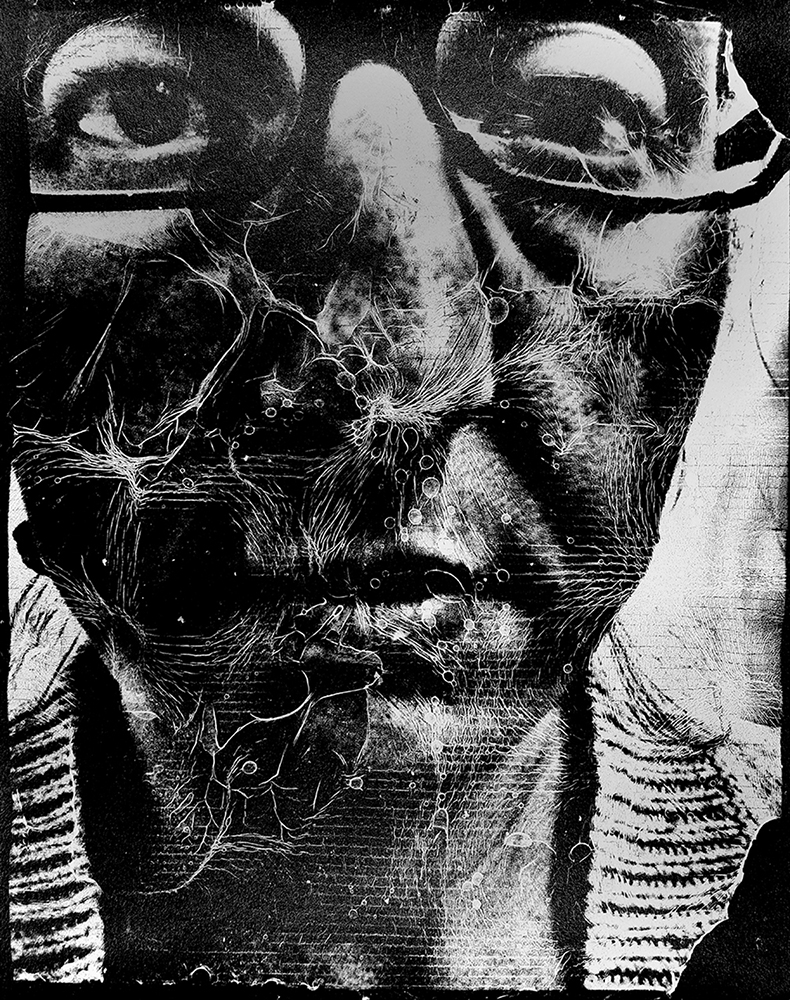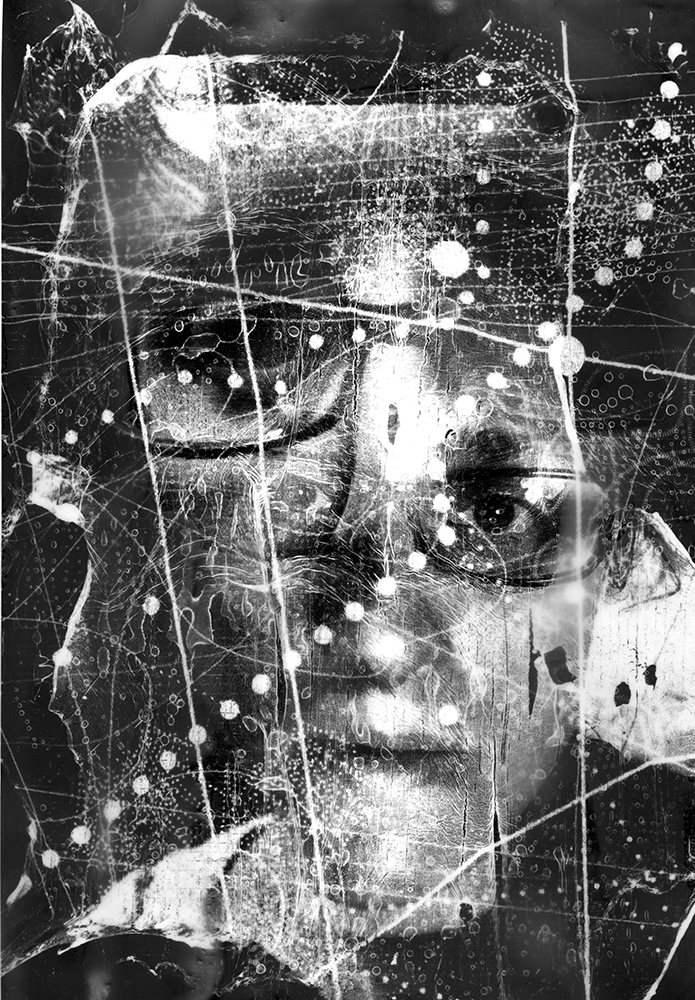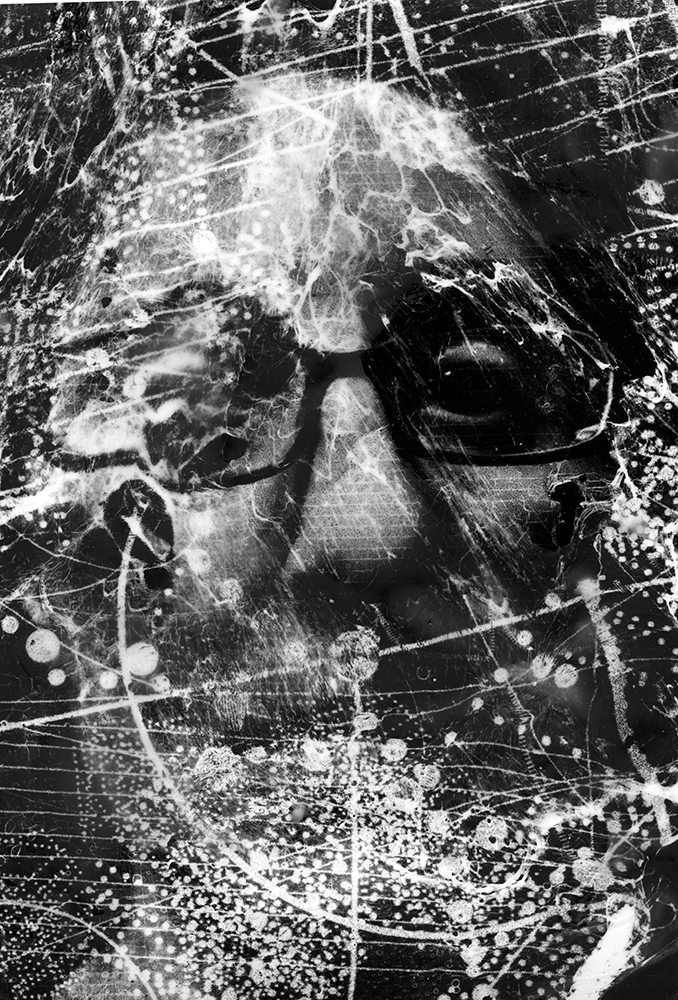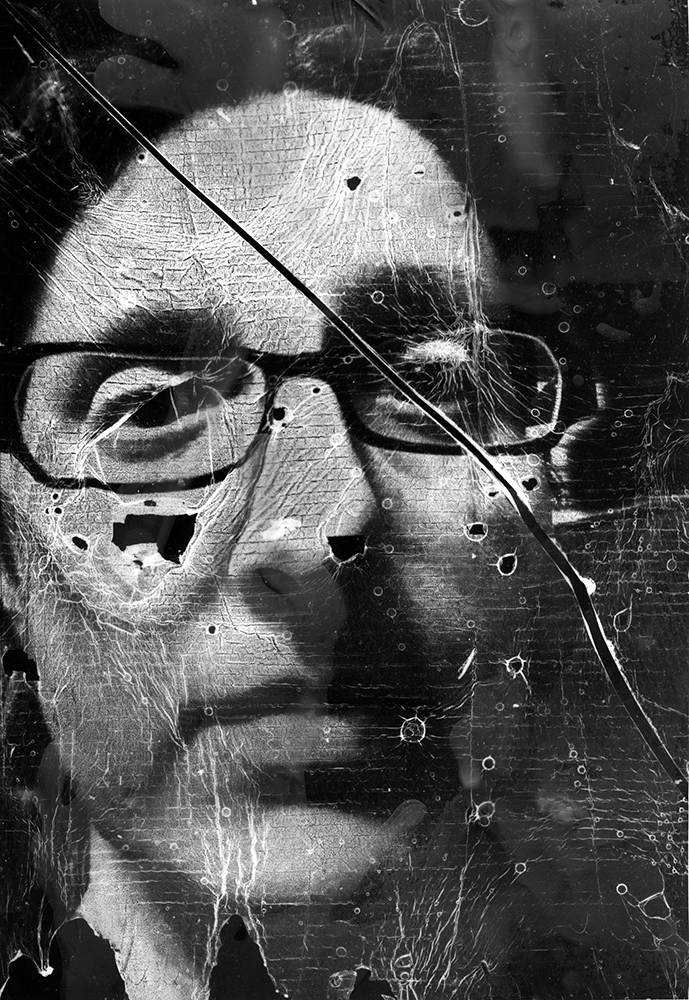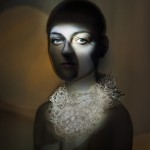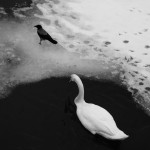Sarah Lazure: Sarah
Sarah Lazure’s series “Sarah” features raw, visceral, realistic self-portraits that command the audience’s attention, free from the beauty standards seen throughout the history of photography. The imperfect surface of the work demanding the viewer’s acceptance as it is. Her eyes become a recurring theme, reminding us that she is watching and does not want to return to the expectations of the past and protesting for further change.
Sarah Lazure is a photo-based artist living in Greenville, North Carolina. As an artist who likes to get her hands dirty, Sarah uses a variety of processes to make her work. She uses a combination of traditional darkroom printing with digital manipulations, wet plate collodian, lithography, various image transfers, and mixed media. She creates layered images that are just as much about process as the image itself.
Follow on Instagram: @aralazure
As a woman artist, I create my own places to exist. My self-portraits are full of emotion, thought, and creative energy and are made to engage the viewer in an intimate moment. I work by transforming thoughts and emotions into photographs and then alter the image. The creative process is an intuitive call and response between me and the materials. I continue to manipulate the surface until the discourse is complete and the piece is balanced. I empower my gaze and the intimacy of prolonged eye contact to portray the strength of my vulnerability and my desire to connect, acknowledge, and interact with my viewer. My gaze is commanding and requests your return gaze. There is no question that I am looking at you.
GB: Tell us a little bit about your childhood and how you became an artist?
SL: I was a very imaginative child; an early storyteller and avid reader. I enjoyed writing stories and poems for much of my childhood. My parents had a Polaroid camera and I was mesmerized by the magic of the image appearing. I made a lot of photographs of my dad. Even then, I was interested in the human connection we can capture in an image.
In my sophomore year of high school, I strayed from a mechanical drafting course of study to my true introduction to visual art. I remember my first day in the darkroom. It was a magical experience and I knew right away that this was my future. The camera let me capture the world around me and the darkroom was the portal to creating my own world.
GB: How does the female gaze play a role in this work and why was it important to surround the viewer with the eyes of your self-portraits?
SL: Anita Selzer said, “The female gaze reclaims women's bodies as repositories for multiple meanings. It emphasizes the emotions of and intimacy between creator and subject, who are at times the same person.” As the creator and the subject, I control the narrative by asserting my own gaze instead of being the object of someone else’s.
I am not an eloquent orator. I am not the life of the party. I do not seek to be the center of attention. I can no longer hide or stay silent by having an exhibition, a space, consumed by my gaze, my eyes. There is no question: I am looking at you. I am looking at you with open,
receptive eyes. I am looking at you with my whole being.
I don’t need to share any further part of me than my eyes. My body, my pose, are no longer important. My eyes tell the entire story, as they connect and reflect with the variations shared.
GB: Describe your physical process and how your hands play a crucial role in the making.
SL: I made photographs of myself through a variety of means, cell phones, mirrors, digital and analog. The images were often flat in dimension as the space around me wasn’t important to the final product. Regardless of how I captured my likeness, all images went through a multi-stage process. I digitally pushed contrast and texture, emphasizing wrinkles, pores, and hairs.
My face became a landscape for my eyes to live in. I printed these images as negatives and as positive transfers. Bubbles, stretched elements, and holes created by super sauce transfers made each image more unique. Images were printed traditionally in the darkroom on two types of paper: good old RC because of the ability to apply wax and heat the plastic surface for additional destruction and the very sexy Hannamule fiber paper for the added textural component.
Process fascinates me. While my images and their initial manipulations occur digitally, with a screen, I truly enjoy all of the parts that come next, fluid and responsive. My hands allow for errors and imperfections themselves, as I am fallible. In the moment of creating, I create a kind of call and response with the image and the steps I take to add or remove elements to the photograph. The photographs are transformed beyond the simple reactions of silver suspended
in gelatin. This blurs the lines between photography and printmaking and collage. In creating like this, I make more than one print of any image and often work on several of them simultaneously, letting go of perfection and uniformity. I have hundreds of prints that all inform this body of work. I used to say that I was an artist who likes to get her hands dirty. As cliche as it sounds, I love the immersion of the materials. I love the feeling of paper soaking water, the
tackiness of printing ink, and the smell of wax. The images are not clean or sterile; they show the evidence of the hand manipulations and materials used in their layers and holes. By using my hands instead of creating all of this digitally, my physical marks are part of the final image.
GB: Discuss how your approach to self-portraits serves as a means of resisting or protesting the tradition of objectifying women in photography.
SL: Portraits are how someone else sees you and translates you in their medium of choice. Self-portraits are how we want someone to see us. Often in photography, we associate female self-portraits with accepting or defying gender roles, with comments on their femininity or sexuality, with their identity or family. I didn’t identify as any of the stereotypical roles that are addressed in the theories we have been taught.
My work serves to resist the traditional beauty standards, to resist the enhancements applied to images of women in photography, and to protest the overwhelming objectification of women at every age.
My self-portraits are not pretty. They embrace the truth of my body, my age, and my gaze. I am not choosing the “best of” selfie to share for others to review, critique, and judge. I used the throw away images, the ones that capture my crying, with dull eyes, no makeup, messy hair. There is a defiance to society by choosing to share those images instead of highly edited, curated versions.
GB: Talk about the layers and embracing the imperfections of the surface of the work as a metaphor for embracing your own imperfections.
SL: Layers happen on so many fronts. Layers occurred in the original construction of images, in printing multiple images on a singular sheet, in printmaking techniques on and below transferred images. Layers enhanced imperfections that were already present and created new ones in the intentional, and sometimes not, choices of my hand.
I relished in the imperfections of the surface of the paper, the parts of my face that were hidden or revealed by adding wax and ink to printed images, and how I saw these marks created my own visual map.
Posts on Lenscratch may not be reproduced without the permission of the Lenscratch staff and the photographer.
Recommended
-
Ragne Kristine Sigmond: Portraits of Painterly LightDecember 2nd, 2025
-
Mary Pat Reeve: Illuminating the NightDecember 1st, 2025
-
Ricardo Miguel Hernández: When the memory turns to dust and Beyond PainNovember 28th, 2025
-
Pamela Landau Connolly: Columbus DriveNovember 26th, 2025
-
MATERNAL LEGACIES: OUR MOTHERS OURSELVES EXHIBITIONNovember 20th, 2025

